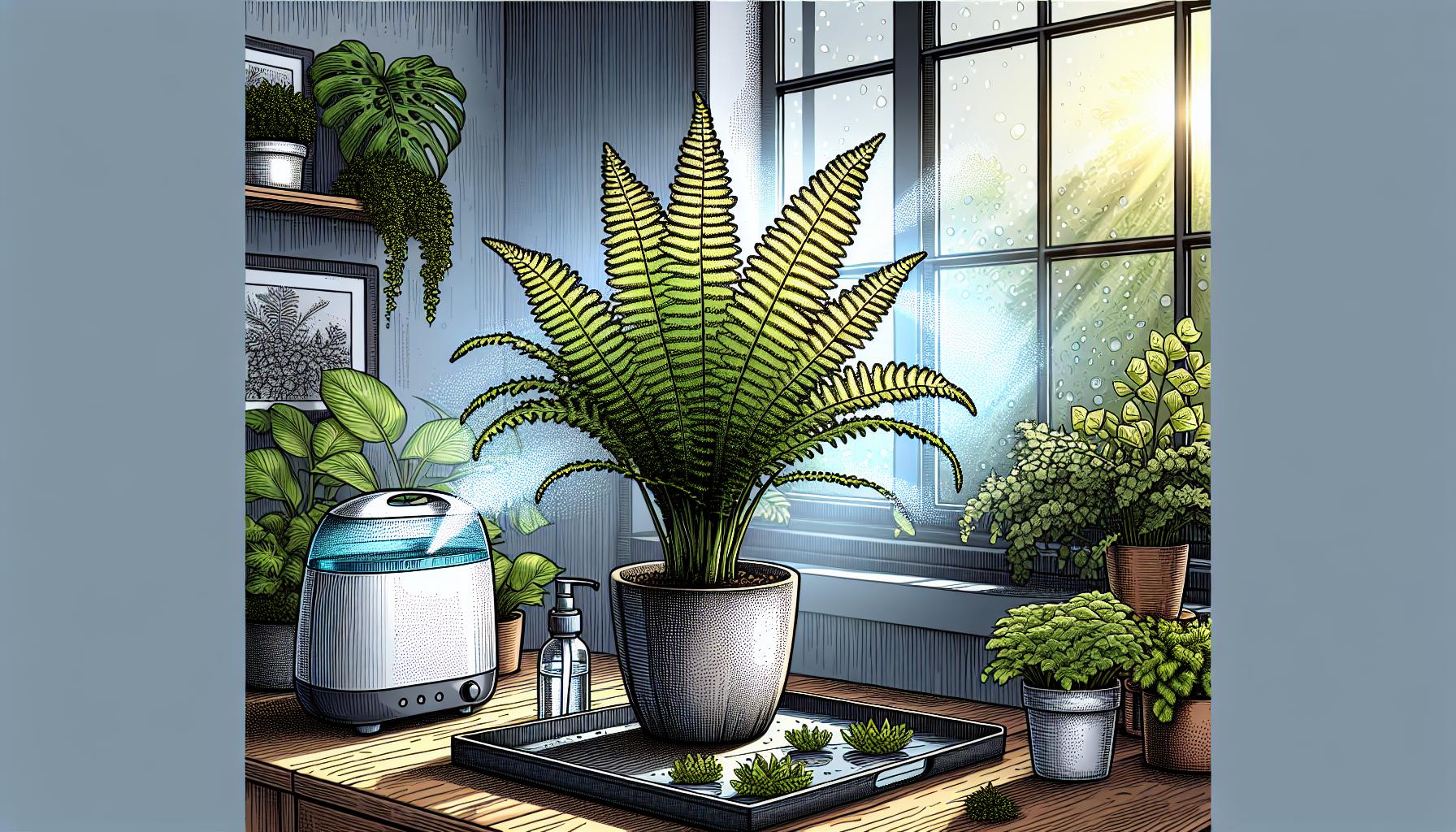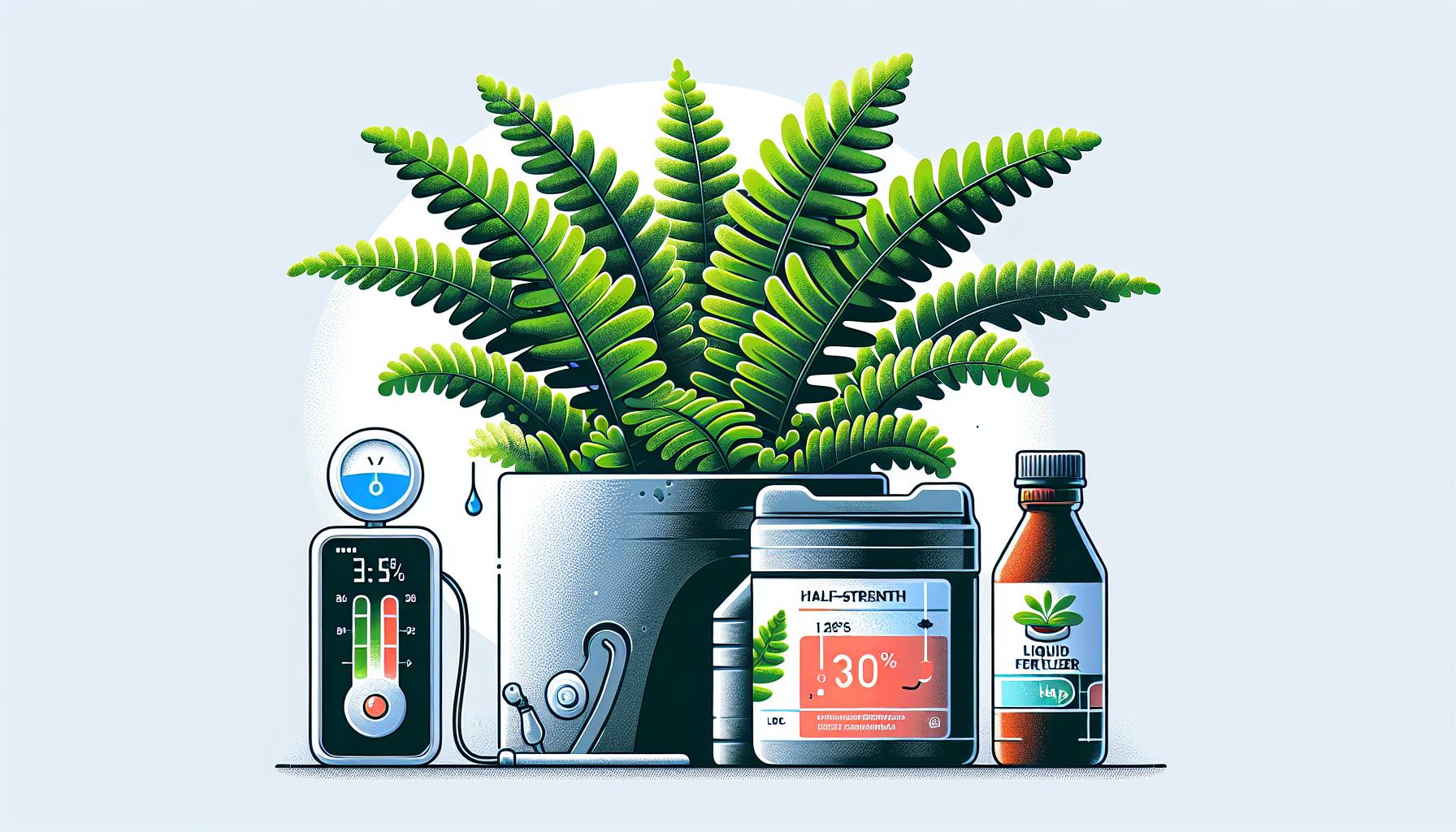
Struggling with a fern that’s lost its lustre? Reviving your fern isn’t just about watering; it’s about understanding the delicate balance of care these plants need. Whether it’s brown fronds or a general lacklustre appearance, you’re about to learn how to bring your fern back to its vibrant self.
Assessing the Health of Your Fern
Before you can breathe new life into your fern, it’s essential to assess its current state of health. By closely examining your plant, you’ll gain insight into what may be causing any visible issues.
Firstly, inspect the fronds of your fern. Healthy fronds should be vibrant and green. If you’re seeing brown or yellow leaves or fronds that are wilting or crispy, it’s a signal that your fern is under stress.
Look at the soil in the pot. Ferns prefer moist, but not waterlogged, soil. If the soil is dry and pulling away from the edges of the pot, your fern is likely underwatered. Conversely, if the soil is extremely soggy, overwatering could be the problem.
Don’t forget to examine the roots. Gently ease the fern out of its pot and check for root health. Healthy roots are firm and light-colored. Dark or mushy roots suggest root rot, often caused by excessive moisture.
Check for pests, too. Common pests like spider mites and mealybugs can sap your fern’s strength. These critters often hide beneath fronds or along the stem, causing discoloration and leaf drop.
Addressing the health issues identified during your assessment is crucial for the revival process. Bear in mind that recovery for ferns can be slow, so patience combined with the proper care regimen will yield the best results.
Understanding the Needs of Ferns

Ferns are not just any houseplants; they require specific conditions to thrive. To successfully breathe new life into your fern, it’s imperative to understand their unique needs. These plants hail from environments that offer high humidity, dappled sunlight, and well-draining soil, aspects you’ll need to replicate at home.
High humidity is vital for ferns, given their natural rainforest habitat. Indoor ferns often struggle because central heating and air conditioning create dry air conditions. You can increase humidity by:
- Placing water trays near the plant
- Using a humidifier
- Grouping plants together
When it comes to light requirements, ferns are quite particular. They need plenty of indirect light but can be scorched by the direct sun. Ideally, you should position your fern in a north-facing window where they receive gentle morning light or use sheer curtains as a buffer in brighter spots.
Soil and drainage play a critical role as well. Ferns prefer loamy, well-draining soil that stays moist but not waterlogged. Ensure the pot has enough drainage holes and consider mixing perlite into the potting soil to improve drainage. Overwatering is a surefire way to harm your fern, leading to root rot and other issues, so water only when the top inch of soil feels dry to the touch.
Monitoring these conditions and adjusting your care routine to fulfill them will set your fern on the path to recovery. Remember to keep an eye on the temperature too; fern-friendly temperatures range from 15°C to 21°C, mimicking their natural, warmer climate. Too much deviation from this range can lead to stress and a declined health of your fern.
Providing the Right Amount of Water

Watering your fern is crucial to its revival, but there’s a delicate balance to strike. Ferns require consistent moisture, but they can’t stand to be waterlogged. The goal is to mimic the natural dampness of their woodland habitats. Here’s how you can achieve it:
- Check the soil before watering; it should be moist but not soggy. If the top inch of soil is dry, it’s time to water your fern.
- Use lukewarm water, making sure it reaches the roots by soaking the soil thoroughly until water runs out of the drainage holes.
- Consider the size of your plant and the pot to determine the frequency and amount of water needed. A larger fern in a big pot will retain moisture for longer than a small fern in a compact pot.
Rotate your fern gently with each watering to encourage even growth and water distribution. Be aware of the seasonal changes; your fern will need less water during the winter months when its growth slows down. Here’s a simple schedule:
| Season | Watering Frequency |
|---|---|
| Spring and Summer | Twice a week |
| Autumn | Once a week |
| Winter | Every 10-14 days |
Remember, the exact frequency may vary depending on your home’s humidity levels and temperature, so always check the soil before proceeding. Too much water can lead to root rot, which is detrimental to your fern’s health. Regular monitoring and adjustment according to your fern’s response are paramount. Over time, you’ll develop a sense for your plant’s hydration needs, facilitating a successful revival and lush growth.
Ensuring Proper Drainage

When attempting to revive your fern, ensuring proper drainage is crucial. Excessive moisture can be as harmful as drought, potentially leading to root rot. Ferns need a balance to thrive, and the right drainage setup can make all the difference.
Firstly, choose a pot with adequate holes at the bottom. This allows excess water to escape and prevents the soil from becoming waterlogged. If your current pot doesn’t have these, consider drilling holes or transferring the fern to a more suitable container.
Next, consider the type of soil used. A well-draining mix, often sold as ‘houseplant’ or ‘indoor potting’ soil, is ideal for ferns. These mixes typically contain peat, perlite, and vermiculite, components that promote moisture retention and air circulation within the soil.
To improve drainage further, laying a layer of pebbles or broken pieces of terra cotta pots at the bottom of the container before adding soil can also be helpful. This layer acts as a barrier, keeping soil from clogging the drainage holes and allowing water to flow freely.
During watering, monitor how quickly the water drains — it’s a good indicator of the soil’s condition. If the water sits on the top for a while before draining, the soil may be too compacted, and it might be time to re-pot with fresh, loose soil.
Regular checks on the drainage system will help you maintain the optimal moisture level for your fern. Adjustments to the potting setup may be necessary over time, as the plant grows and the roots develop. Keep an eye on how the water interacts with the soil and container after each watering session to ensure your fern has the best chance at recovery.
Creating the Ideal Environment for Your Fern

When you’re nurturing a fern back to health, lighting plays a pivotal role. Ferns typically enjoy filtered light rather than direct sunlight. This mimics the dappled lighting of their natural habitat under forest canopies. To recreate this at home, place your fern near a window where it can receive bright, indirect light. Avoid south-facing windows, which may provide too much direct sunlight and scorch the delicate leaves.
Humidity is another crucial factor for your fern’s revival. Ferns thrive in moist environments—a humidity level of 50-60% is ideal. To boost moisture, consider these strategies:
- Place a humidifier nearby.
- Set the fern’s pot atop a water-filled tray with pebbles to ensure the pot isn’t sitting in water.
- Mist the fern’s leaves regularly.
Maintaining a consistent temperature is also key; ferns are most comfortable in temperatures ranging from 18°C to 24°C. Keep the plant away from drafts, air conditioners, or heat sources, which can cause drastic temperature fluctuations and stress the plant.
Lastly, feeding your fern the right kind of nutrients will promote its lush growth. During the growing season, a balanced liquid fertilizer appropriate for foliage plants can be used monthly. Remember to follow the manufacturer’s instructions to avoid over-fertilization, which can harm the plant.
By adhering to these environmental adjustments, you’re setting the stage for your fern to make a full and verdant comeback.
Avoiding Common Mistakes in Fern Care

When you’re committed to reviving your fern, sidestepping common care errors is just as crucial as providing the right conditions. First, resist the urge to overwater. Ferns enjoy consistent moisture but excessive water can suffocate their roots and lead to root rot. It’s essential to have a pot with drainage holes and use soil that allows water to pass through easily.
Remember, ferns dislike the lime that’s often found in tap water. If your local water is hard, consider using rainwater or distilled water to avoid build-up of minerals that can harm your fern.
Another mistake is placing ferns near air vents or heaters. Your fern doesn’t just need to avoid cold drafts; hot, dry air can also be detrimental, rapidly sapping the humidity around your plant. It’s important to maintain that ideal humidity level of around 50% for your fern to thrive.
Lastly, pay attention to feeding schedules. While your fern benefits from regular feeding during the growing season, over-fertilization can burn the delicate roots. Stick to a half-strength liquid fertilizer and apply it no more than once a month.
By avoiding these common mistakes in fern care, you’re setting the stage for your plant’s rejuvenation and continued health. Regular observation will help you catch early signs of distress, allowing you to adjust your care routine in stride.
Conclusion
Reviving your fern isn’t just about the immediate steps you take; it’s also about the ongoing care you provide. Remember, steering clear of overwatering and using the right type of water will make a world of difference. Keep your fern away from harsh, dry air and be mindful not to overwhelm it with fertilizer. With these tips, you’re well on your way to seeing your fern thrive once again. Stay vigilant for signs of distress and adjust your care routine as needed. Your fern’s revival is a testament to your dedication and understanding of its needs. Keep up the good work and enjoy the lush, green fronds that are sure to follow.
Colin Macmillan is a seasoned entrepreneur and the CEO of Riverwood Landscape, a leading landscaping company based in Canada. He has been at the helm of the company since leaving high school, demonstrating his strong leadership skills and business acumen.
Colin’s expertise lies in various aspects of landscaping, including lawn care, interlocking, sod installation, and commercial maintenance. His hands-on approach and dedication to the craft have been instrumental in building Riverwood Landscape into a reputable brand.
One of his most notable achievements is the creation of a successful landscape franchise that services multiple locations. This accomplishment underscores his strategic thinking and ability to scale operations effectively.
Colin has also had the privilege of working with Guelph Hospital for landscaping and maintenance, a testament to the trust and reliability that his company has earned over the years.
His professional mission is to offer the best services and experiences for customers, a goal that he tirelessly pursues. Colin’s commitment to excellence and customer satisfaction continues to drive the growth and success of Riverwood Landscape.








